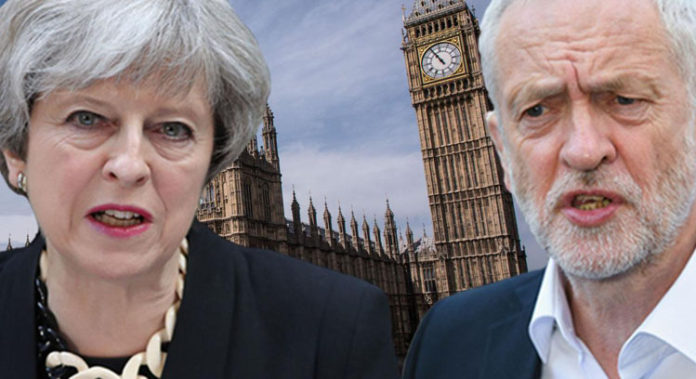
THE PRIME Minister never saw it as a gamble, but many did. She never saw it as an arrogant assumption that it was game, set and match and a simple click of the fingers to get a landslide majority, but many did. She never believed in her wildest dreams that millions of people would vote for Jeremy Corbyn, but many did.
The gamble and the self-belief displayed by Theresa May was given the thumbs down by the British people who, whilst voting her Conservatives as the largest party in the House of Commons failed miserably to give her the 100 plus majority that all were expecting when the General Election was announced on the Tuesday after Easter. Yes, it was that long ago, and when people say a week is a long time in politics seven weeks must surely represent an age or an era.
Signs were there 48 hours before the polls opened that the voting intentions of the British electorate were changing. A 20 point lead a month ago had dropped to a two to four percentage point lead and the squeaking noises began to be held from Conservative Central HQ. Could the Tories really snatch defeat from the jaws of an assumed and confident victory? No way…the polls are always wrong, aren’t they? Except in this case they weren’t.
As the Big Ben bongs boomed 10pm, jaws dropped on all sides of the political spectrum as the results of the BBC/ITV/SKY exit poll was broadcast. “Conservatives will be the largest party” uttered David Dimbleby in rather surprised and hushed tones. Tories couldn’t believe it. Labour supporters couldn’t believe it, and all rested on whether the real results disproved the findings or otherwise.
Newcastle beat Sunderland to be the first to declare for the first time and the initial handful of results showed Labour doing worse than forecast and the Conservatives doing better.
Perhaps, as in 2015, the Exit Poll had underestimated the Tory vote and they would secure a small majority after all. TV studio experts even said that a 60 to 90 majority was still on the cards. The 1% and 2% swings either way were then replaced with levels of 6% and 9% and it was apparent that this wasn’t going to end up with Mrs May returning to Downing Street in the way she wanted.
She finished up with 318 seats – 8 short of an overall majority – and 56 seats ahead of Corbyn’s Labour.
The biggest losers on the night were the Scottish Nationalist Party (SNP) losing 21 of their 56 seats including former leader Alex Salmond and Commons leader, the much respected Angus Robertson. The Liberal Democrats’ Nick Clegg lost his seat in Sheffield Hallam but were compensated with Sir Vince Cable and Sir Ed Davey regaining seats lost just two years ago. Of the 13 net losses suffered by the Conservatives, no household names lost their seats.
Despite losing their third election in a row, Labour won its greatest share of the popular vote since 2001 (40%), it was the first election since 1997 in which the party gained more seats than it lost, and their swing of 9.6% was the largest by an opposition party since Clement Attlee led Labour to win a large majority in 1945. Despite losing its majority, the Conservative Party also won an unusually high share of public support, winning its highest vote share (42.4%) since 1983. Two party politics certainly seems to have returned.
Following a Cabinet reshuffle on Sunday afternoon that didn’t see a single sacking – just a game of musical chairs – Theresa May is meeting Arlene Foster, the leader of the DUP, today (Tuesday) in Westminster to thrash out the final details of the formal ‘confidence and supply’ arrangement which will enable her to get vital pieces of legislation through the House of Commons, and begins with the Queen’s Speech next Monday.








